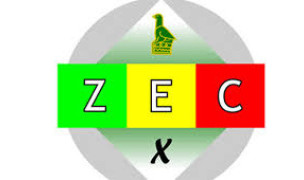 10 Terms
10 TermsHome > Terms > English (EN) > race and ethnicity literature
race and ethnicity literature
The decisions about whether and how to generalize about the study of minority literature are complex because of the history of minorities in the US and the academic study of their literatures and cultures. African American contributions to the literature and culture of the US are older than the Republic; however, academic institutionalization of their study came more recently emerging with the Civil Rights movement in the 1960s.
Interest in and study of the cultural production of other people of color followed, but whether and how they are analogous remains a topic of debate. Do we define minority cultures by country of origin, as in Chicano studies? By language, as in Hispanic literature? By broader area of origin, as in Asian American or Caribbean? Further, is it useful or true to focus on similarities among the experiences of ethnic minorities within and immigrants to the US—a shared history of diaspora, oppression, adaptation, contribution and resistance? Or is it more important to note the differences within these histories—slavery for African Americans, centuries of intertwined history for Chicanos/Latinos, no immigration tale to tell for American Indians? Further, how do we talk about and account for the influence of “home” cultures: the difference between, say Japanese and Filipino culture and history that makes the idea of “Asian American” so hard to generalize? What difference does it make that many immigrant groups now, in the age of cheaper global travel, have a transnational identity retaining personal and cultural ties to home countries rather than largely severing or transforming them upon immigration? Does a similarity of approach to minority cultures in any way repeat one of the errors of racism by defining these diverse literatures in terms of their difference from the presumed center, that is, mainstream white culture? Finally at what point, if ever, does the importance of minority contributions to literature and literary study lead us to redefine American culture so completely that to define minority literature separately stops making sense? While the movement to abolish slavery saw the publication of slave narratives and other important cultural documents that form the nineteenth-century canon of African Americans (the Harlem Renaissance and Black Arts movement are other crucial periods in an ongoing literary culture), it was the Civil Rights movement that established African Americans’ crucial academic presence and the “recovery” of many. The existence of programs and departments in Black Studies, Africana Studies and African American literature and culture attests to the historical emergence of a diversity of approaches since the 1960s. Fueled by the Civil Rights movement in the 1960s and Aztlán in California in the 1970s, Chicano/Latino culture also entered the academy—as did the study of Native American literature and cultures. Asian American Studies also largely began as a West Coast, indeed a Pacific, phenomenon. By now, minority literature has become increasingly important among both academic and mainstream readers, students and critics of American literature in general.
The study of minority literature and cultures has grown, stimulating and stimulated by broader political events and by the poststructuralist literary theories that refused to see literary artifacts as aesthetic objects separable from the historical and political context in which they emerged. Minority critics and theorists noted how putatively “pure” aesthetic standards had been used by a white-maledominated literary mainstream, consciously or unconsciously to enforce or explain the devaluation and exclusion of the work of nonwhite authors’ politically committed texts and non-traditional forms. Alternative literary theories emerged to account for the ways in which minority voices and the literary forms they used shaped, were shaped by and provided insight into the strains of exclusion and oppression by mainstream culture, demonstrating that literary differences were not defects but occasions of and for reflection.
Emerging in the 1970s, Ethnic Studies marks an alliance and shared approach among minority scholars. The idea of Ethnic Studies is a commitment to seeing minority literature in cultural, historical and political context, and maintaining a sense of the cultural specificity of different traditions such as Native American or Asian Pacific Islander, while having a common ground for critiquing mainstream culture from the point of view of the excluded or forgotten margin.
While an awareness of the richness of minority discourse has reshaped the study of American literature and culture, many scholars affirm the continuing need for their separate study. This reflects both an affirmation of the literary and theoretical contributions they will make, and an insistence that social justice for minorities is far from having been achieved, either inside or outside the academy Writers of all ethnicities have enjoyed increased success and recognition, in genre fiction as well as in serious fiction and poetry. The emerging canons of especially wellknown, popular and widely taught authors grow and change constantly. Dominating the last years of the twentieth century have been African American novelists Toni Morrison (a Nobel laureate), Alice Walker and Gloria Naylor. Among Latino writers and Chicano novelists and poets are the likes of Sandra Cisneros, Rudolfo Anaya and Cherrie Moraga, while such writers as Cristina García (from Cuba) and Julia Alvarez (from the Dominican Republic) also enjoy a high readership. Asian American writers abound: among them are Chinese American novelist Maxine Hong Kingston, and her antagonist Frank Chin, as well as the popular Amy Tan and Fae Ng. The late Korean American Theresa Kak Kyung Cha, writer and performance artist, is revered by poststructuralist critics, while, more recently novelist Chang-Rae Lee has had wide critical success.
Among Filipino American writers, Jessica Hagedorn is probably best known. There are also many Native American writers, though Louise Erdrich, Michael Dorris, MacArthur prize-winner Leslie Marmon Silko and Sherman Alexie probably stand out.
Organizations exist to foster the study of each tradition. Further, there are important umbrella organizations, for example the MELUS (multiethnic literatures of the United States) journal, established 1974, and annual conference established in 1986. As indicated earlier, no consensus exists about approaches to minority experience and literature. If, for example, Werner Sollors is associated with a traditional liberal view of immigration and assimilation, Ron Takaki’s popular approach emphasizes, in contrast, the maintaining of cultural difference. Within each group are many well-established scholars. A constellation of high-profile African American scholars representing different points of view and emphases includes, for example, Henry Louis Gates, Jr., bell hooks, Barbara Christian and Houston Baker. Well-known Asian American scholars include Elaine Kim, Sau-ling Wong and Lisa Lowe; Chicano/Latino critics include Norma Alarcón, Alfred Arteaga and Gloria Anzaldúa.
- Part of Speech: noun
- Synonym(s):
- Blossary:
- Industry/Domain: Culture
- Category: American culture
- Company: Routledge
- Product:
- Acronym-Abbreviation:
Other Languages:
Member comments
Terms in the News
Billy Morgan
Sports; Snowboarding
The British snowboarder Billy Morgan has landed the sport’s first ever 1800 quadruple cork. The rider, who represented Great Britain in the 2014 Winter Olympics in Sochi, was in Livigno, Italy, when he achieved the man-oeuvre. It involves flipping four times, while body also spins with five complete rotations on a sideways or downward-facing axis. The trick ...
Marzieh Afkham
Broadcasting & receiving; News
Marzieh Afkham, who is the country’s first foreign ministry spokeswoman, will head a mission in east Asia, the state news agency reported. It is not clear to which country she will be posted as her appointment has yet to be announced officially. Afkham will only be the second female ambassador Iran has had. Under the last shah’s rule, Mehrangiz Dolatshahi, a ...
Weekly Packet
Language; Online services; Slang; Internet
Weekly Packet or "Paquete Semanal" as it is known in Cuba is a term used by Cubans to describe the information that is gathered from the internet outside of Cuba and saved onto hard drives to be transported into Cuba itself. Weekly Packets are then sold to Cuban's without internet access, allowing them to obtain information just days - and sometimes hours - after it ...
Asian Infrastructure Investment Bank (AIIB)
Banking; Investment banking
The Asian Infrastructure Investment Bank (AIIB) is an international financial institution established to address the need in Asia for infrastructure development. According to the Asian Development Bank, Asia needs $800 billion each year for roads, ports, power plants or other infrastructure projects before 2020. Originally proposed by China in 2013, a signing ...
Spartan
Online services; Internet
Spartan is the codename given to the new Microsoft Windows 10 browser that will replace Microsoft Windows Internet Explorer. The new browser will be built from the ground up and disregard any code from the IE platform. It has a new rendering engine that is built to be compatible with how the web is written today. The name Spartan is named after the ...
Featured Terms
mango smoothie
Mangos are hard fruits to find ripe, so mango smoothie recipes are enjoyed seasonally. Mangos have a very sweet taste and are quite juicy. The flavor ...
Contributor
Featured blossaries
CSOFT International
0
Terms
3
Blossaries
3
Followers
Chinese Idioms (Chengyu - 成语)
 10 Terms
10 Termsrufaro9102
0
Terms
41
Blossaries
4
Followers
Zimbabwean Presidential Candidates 2013
 5 Terms
5 Terms
Browers Terms By Category
- Authors(2488)
- Sportspeople(853)
- Politicians(816)
- Comedians(274)
- Personalities(267)
- Popes(204)
People(6223) Terms
- Yachting(31)
- Ship parts(4)
- Boat rentals(2)
- General sailing(1)
Sailing(38) Terms
- General Finance(7677)
- Funds(1299)
- Commodity exchange(874)
- Private equity(515)
- Accountancy(421)
- Real estate investment(192)
Financial services(11765) Terms
- Industrial lubricants(657)
- Cranes(413)
- Laser equipment(243)
- Conveyors(185)
- Lathe(62)
- Welding equipment(52)
Industrial machinery(1734) Terms
- Action toys(4)
- Skill toys(3)
- Animals & stuffed toys(2)
- Educational toys(1)
- Baby toys(1)



